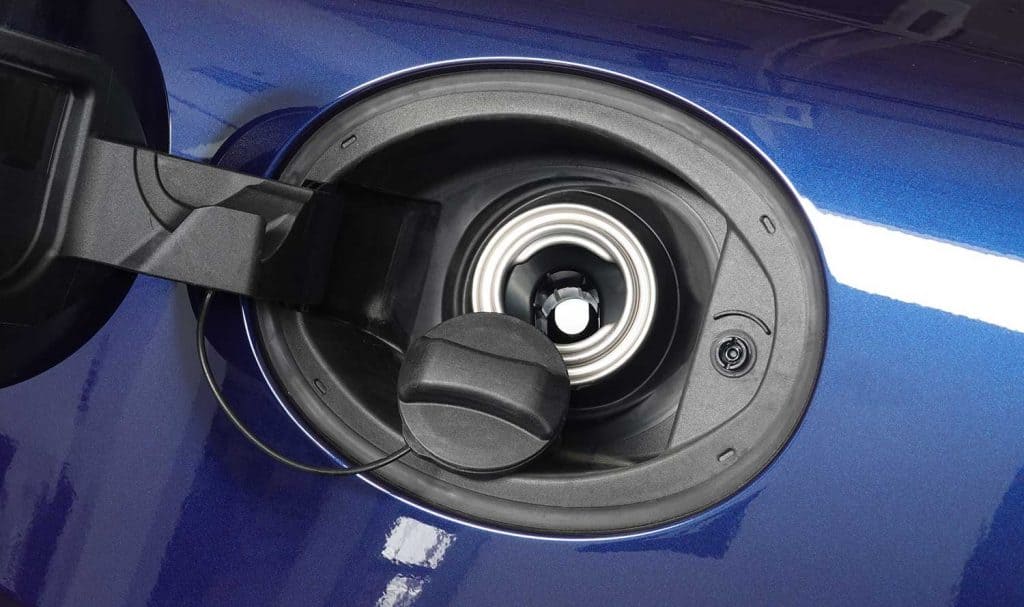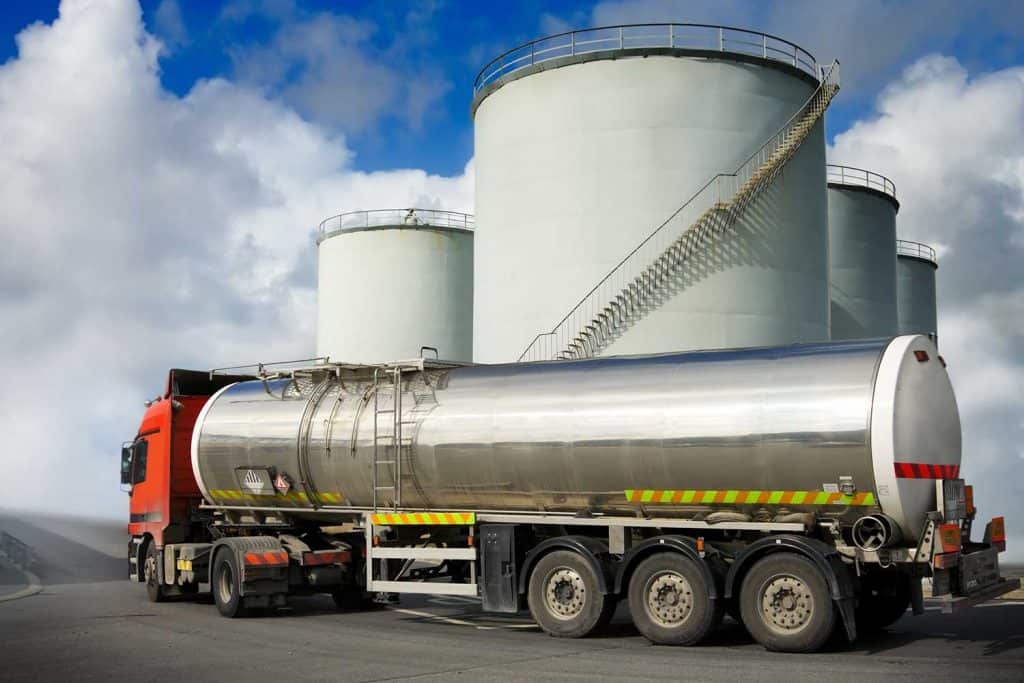It's probably fair to say that we have all filled up a fuel tank at one point in our lives. However, have you ever thought about what the fuel tanks are made of? We have done the research to answer this question on your behalf!
Typically, fuel tanks are made of plastic polypropylene, regrind plastic, high-density polyethylene, ethyl vinyl alcohol, or a plastic adhesive. However, fuel tanks can also be made out of other materials. These materials include steel, iron, or aluminum, which can withstand high temperatures.
We get it; wondering how fuel tanks are made or what they are made out of probably doesn't take up much of your day. However, it is an exciting concept, and there is a lot that goes into it. That's why in this article, we will take a closer look at how fuel tanks are made of and their durability, so read on!
![Filling the gas tank of a car, What Are Fuel Tanks Made Of? [Everything You Need To Know!]](https://vehq.com/wp-content/uploads/2021/10/What-Are-Fuel-Tanks-Made-Of-683x1024.png)
What Are Fuel Tanks Made Of?
The materials that make up fuel tanks are varied. Depending on the type of tank, other substances may be used to help create it. However, there are a few components that you can always expect to see in any fuel tank, including plastic polypropylene, regrind plastic, high-density polyethylene, ethyl vinyl alcohol, and a plastic adhesive.
So what is the difference between plastic adhesives and a chemical bond? The main difference between adhesive bonds and chemical bonding is that adhesives typically fade over time while chemical bonds do not. The chemical bond is made up of countless molecules, which is a characteristic that does not change.

Most Common Fuel Tank Material
The most common material for fuel tanks is plastic polypropylene. This is due to its flexibility and durability, allowing the fuel tank to safely contain liquids while also moving on rough terrain.
Another component in creating these tanks is reground plastics. These are plastics that come from post-consumer resin-like bottles, containers, and other waste materials. This process recycles convenience store items into fuel tanks!
Another material that makes up a fuel tank is high-density polyethylene or HDPE. This plastic product helps create the shell of the fuel tank, which keeps the liquid contained within. It also creates another element to its structure like the cap, seams, and threads.
Ethyl vinyl alcohol (EVA) is another component of fuel tanks. This material helps to create the chemical bond that holds pieces together.
Another factor to consider is cost-effectiveness. For a chemical bond, the initial cost of creating the fuel tank may be more expensive than using an adhesive. However, those who do use adhesives have to replace them as they wear out over time regularly.
This constant replacement can become costly too. In the end, the choice of which material to use is up to the manufacturer. However, it does affect not only the cost but also how long the fuel tank can last.
Why Are Some Fuel Tanks Made Of Steel Or Aluminum?
This question may surprise you as steel and aluminum are typically used for other cars or appliances. These materials are beneficial for fuel tanks because of their durability and heat resistance. The ability to withstand high temperatures is essential in building a fuel tank, as it may get scorching while the vehicle runs.
You can usually expect to see steel fuel tanks on diesel vehicles and aluminum ones on gasoline-driven vehicles. This is because of their resistance to corrosion and rusting.
Another reason why you may see a steel or aluminum tank is for visual appeal. These materials give the fuel tank a sleek look which some car owners prefer. Whether made of steel or aluminum, you can be sure that fuel tanks are made to last.

Do plastic fuel tanks go bad?
The life expectancy of plastic fuel tanks varies. Different forums and professional sites give different answers on the average lifespan. Some say that you can expect a plastic fuel tank to last 25-30 years. Then there are some who say that you can only expect to get 15-20 years.
It will depend on the type of plastic the fuel tank is made out of. For example, it is said that fuel tanks made with high-density polyethylene will last 30-40% longer than other plastic fuel tanks.
There is an advantage as well as a disadvantage to using plastic fuel tanks. The upside is that they are lightweight and easy to move around, which brings us back to the fact that plastic polypropylene allows them to be flexible. They can even handle some impact, so there isn't much of a risk of cracking or breaking when moving around.
However, one of the most significant disadvantages is that plastic tends to become weak when exposed to high temperatures. As a result, the fuel tank could melt or burst due to its composition versus steel or aluminum fuel tanks when this occurs.
How thick is a plastic fuel tank?
According to Patents.Google, plastic fuel tanks are 1.5 mm to 5 mm thick. Steel or iron fuel tanks are similar ranging from 2.5 mm to 5 mm.
A common misconception is that plastic fuel tanks are flimsy because of their lightweight composition. Then you have to consider the fact that different plastic materials vary in strength, impact resistance, and weight. However, if you are still unsure about the durability of a plastic fuel tank, look at its thickness.
Typically speaking, thicker is better when it comes to plastic fuel tanks. As mentioned earlier, plastic polypropylene is the most flexible and lightweight type of plastic. However, this also means that it can be considered weaker than other types of plastics.
That's why you'll often see thicker fuel tanks made out of high-density polyethylene (HDPE), which has considerably more strength. If the tank is exceptionally thick, it is likely made with polyethylene terephthalate (PET).

Can you repair a plastic gas tank?
The answers vary to this question. YouTube videos show that it is possible to fix plastic gas tanks. However, It Still Runs says it isn't possible to fix or patch a plastic fuel tank because the heat will burn through the tank.
This depends on the severity of the damage. For example, if there is a crack or hole that causes fuel to leak, you will need to replace it immediately. However, if there are just some dents and scratches, it may be possible for a professional mechanic to repair the plastic using specialized techniques.
No matter what type of fuel tank your vehicle has, always have an auto mechanic inspect the tank if it is leaking fuel. It could be a simple fix, or you may need to replace it altogether!
Can you J-B Weld a gas tank?
It is possible to J-B Weld a leaking gas tank as long as the damage isn't significant. However, doing so should be done with caution and honestly should bed done by a professional.
Always have an auto mechanic inspect any leaks, no matter how minor they seem. But, if the damage can be repaired through J-B Welding by a professional mechanic, then it's worth giving it a shot!
How full should you keep your gas tank?
There isn't a perfect answer to this question, so the best advice is always to fill up as you go. It is said not to let your fuel level drop below the quarter tank line because it can be hard on your fuel pump.
In addition to this general rule, you should never keep too much fuel inside your tank for too long. To clarify, keeping gas in your tank for more than a month can cause build-up on the tank wall. Over time this could create cracks that could be detrimental to your car's fuel system.
Some recommend that you always keep at least 1/2 tank no matter how often you drive because it is easier for your car's engine to burn gasoline close to the tank's bottom.
Final Thoughts
To ensure the durability and safety of your vehicle, get a trusted mechanic to inspect your gas tank regularly. If you notice any problems such as leaks or excessive rust, replace the fuel tank right away. You can also ask for their opinion on whether J-B Welding would be an effective solution in this situation.
Did you like this article? You should also check out:
Can I Put Fuel Injector Cleaner In A Fuel Tank?
Best Fuel Additives For Old Gas In Car
19 Types Of Diesel Fuel Additives
We would love to hear from you! Leave us a comment below!

Thank you for telling me that there isn’t a perfect answer to this question, so the best advice is always to fill up as you go. It is said not to let your fuel level drop below the quarter tank line because it can be hard on your fuel pump. My father just bought a custom fishing boat. I will share this post for him to know where to buy a custom marine fuel tank.